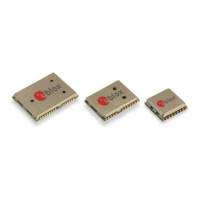
Do you have a question about the Ublox NEO-6 and is the answer not in the manual?
| Brand | Ublox |
|---|---|
| Model | NEO-6 |
| Category | Control Unit |
| Language | English |
Provides access to product information, technical documents and FAQs.
Contact technical support via email for assistance with technical problems.
Details required when contacting technical support for efficient assistance.
Provides a general overview of the u-blox 6 leadless chip carrier (LCC) modules.
Details on connecting power supply and managing power modes for the modules.
Describes various serial interfaces including UART, USB, DDC, and SPI.
Details on the function and usage of various I/O pins on the modules.
Provides a checklist for optimal design-in and performance of u-blox 6 GPS applications.
Design recommendations and schematics for LEA-6 modules.
Important information for designing reliable and sensitive GPS systems.
Details on connecting antennas and using the antenna supervisor.
Detailed guide on soldering processes for the modules.
Crucial precautions for electromagnetic and voltage susceptibility.
Methodology for testing GPS device sensitivity using a 1-channel GPS simulator.
Details on software migration from ANTARIS 4 or u-blox 5 to u-blox 6.
Key hardware migration considerations from previous module generations to u-blox 6.
Details on the I²C compatible Display Data Channel (DDC) interface.
Details on the Serial Peripheral Interface (SPI) basics and configurations.
Recommended driving directions for efficient initial calibration of DR sensors.
